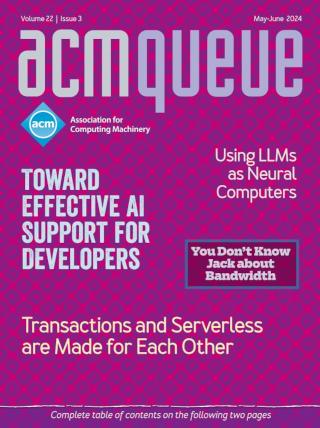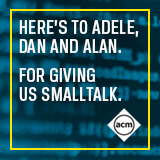
Research for Practice: Distributed Transactions and Networks as Physical Sensors:
Expert-curated Guides to the Best of CS Research
First, Irene Zhang delivers a whirlwind tour of recent developments in distributed concurrency control. If you thought distributed transactions were prohibitively expensive, Irene’s selections may prompt you to reconsider: the use of atomic clocks, clever replication protocols, and new means of commit ordering all improve performance at scale. Second, Fadel Adib provides a fascinating look at using computer networks as physical sensors. It turns out that the radio waves passing through our environment and bodies are subtly modulated as they do so. As Fadel’s selection shows, new techniques for sensing and interpreting these modulations allow us to perform tasks previously reserved for science fiction: seeing through walls, performing gesture recognition, and monitoring breathing.
Resolving Conflict:
Don’t "win." Resolve.
I am conflicted about conflict. On one hand, I hate it. Hearing people disagree, even about minor things, makes me want to run through the nearest wall and curl up under my bed until it’s over. On the other hand, when it happens, I always want to get into it.
The Unholy Trinity of Software Development:
Tests, documentation, and code
Questions like this bring to mind the fact that source code, documentation, and testing are the unholy trinity of software development, although many organizations like to see them as separate entities. It is interesting that while many groups pay lip service to "test-driven development," they do not include documentation in TDD.
Industrial Scale Agile - from Craft to Engineering:
Essence is instrumental in moving software development toward a true engineering discipline.
There are many, many ways to illustrate how fragile IT investments can be. You just have to look at the way that, even after huge investments in education and coaching, many organizations are struggling to broaden their agile adoption to the whole of their organization - or at the way other organizations are struggling to maintain the momentum of their agile adoptions as their teams change and their systems mature.
Life Beyond Distributed Transactions:
An apostate’s opinion
This article explores and names some of the practical approaches used in the implementation of large-scale mission-critical applications in a world that rejects distributed transactions. Topics include the management of fine-grained pieces of application data that may be repartitioned over time as the application grows. Design patterns support sending messages between these repartitionable pieces of data.
BBR: Congestion-Based Congestion Control:
Measuring bottleneck bandwidth and round-trip propagation time
When bottleneck buffers are large, loss-based congestion control keeps them full, causing bufferbloat. When bottleneck buffers are small, loss-based congestion control misinterprets loss as a signal of congestion, leading to low throughput. Fixing these problems requires an alternative to loss-based congestion control. Finding this alternative requires an understanding of where and how network congestion originates.
Faucet: Deploying SDN in the Enterprise:
Using OpenFlow and DevOps for rapid development
While SDN as a technology continues to evolve and become even more programmable, Faucet and OpenFlow 1.3 hardware together are sufficient to realize benefits today. This article describes specifically how to take advantage of DevOps practices to develop and deploy features rapidly. It also describes several practical deployment scenarios, including firewalling and network function virtualization.





